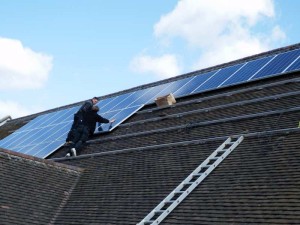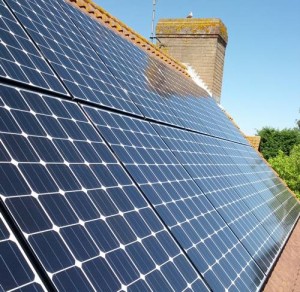What Is The Minimum Pricing Policy and How Does It Affect UK Solar Panel Purchases?
The EU protects European solar panel manufacturers by imposing a minimum price on Chinese imports. But by protecting European businesses through artificially raising the price of solar panel installation, is the EU failing to protect the environment?
Thanks to a devalued currency, government subsidies and a much larger-scale manufacturing industry, Chinese manufacturers can export solar panels to the UK at below the European production costs, potentially putting European competitors out of business. To keep European manufacturers competitive, the European Commission implemented punishing tariffs for Chinese exporters in 2013.
Yet allegations that large numbers of Chinese solar panels are still being dumped into European markets at illegal prices have fanned the flames of an already heated debate. With the yuan being devalued by a further 2% recently, the price difference between Chinese solar panels and their European counterparts will become even steeper.
What is the minimum pricing policy for solar panels?
The current rules stipulate that Chinese imports must comply with the minimum import price (MIP). The MIP ramps up the price of imported Chinese solar panels so that they are in line with the costs of solar panels manufactured in Europe. If the MIP weren’t in place, consumers would have access to cheaper solar panels, but European solar panel producers would go out of business.
The policy has been widely criticised for pushing up the price of green energy in Europe, and has been called “unfair protectionism” for European manufacturers. Solar panel installers argue that access to clean energy is so important to homeowners that the MIP should not be extended when it is up for review in December. In contrast, European solar manufacturers in favour of the MIP are set to launch a formal request for the policy to be extended in 2016.
What does this mean for solar panel buyers in the UK?
According to the latest estimates from industry experts, solar panel modules are more expensive in the EU than the global average, largely due to the MIP.
A solar panel that costs £5,333 in the UK might costs as little as £4,000 in the US – a price difference of £1,333. The recent yuan devaluation will increase that difference, given that China manufactured roughly 64% of the world’s solar PV panels last year.
The UK’s Renewable Energy Association (REA) has found that more than 50% of the installation costs of solar panels in the UK are due to the cost of solar panel modules, meaning that scrapping the MIP would considerably lower the price of solar panels for UK consumers.
Consumers tend to think of solar panels as a high-cost product, but what they often fail to realise is that these high prices are at least in part determined by EU policy rather than market forces. REA analyst Lauren Cook says that ending the MIP would help solar panels to be cost-effective even without government subsidies. She added that to deliver lower cost green energy, the MIP must not be extended past December of this year.
Those that are concerned about the environmental impact of producing a solar panel in China and shipping it all the way to England before installation should take heart though. A recent report reveals that a solar panel ‘pays back’ the energy and material cost of transportation and installation in just four years, then continues to produce clean energy for a further two decades.





 The world is dependent on fossil fuels for it’s energy supply. Currently, fossil fuels account for 80% of the world’s energy consumption. However, fossil fuels take millions of years to form and our reserves are depleting rapidly. This means that fossil fuels are non-renewable resources and society needs to find an alternative energy supply.
The world is dependent on fossil fuels for it’s energy supply. Currently, fossil fuels account for 80% of the world’s energy consumption. However, fossil fuels take millions of years to form and our reserves are depleting rapidly. This means that fossil fuels are non-renewable resources and society needs to find an alternative energy supply.




